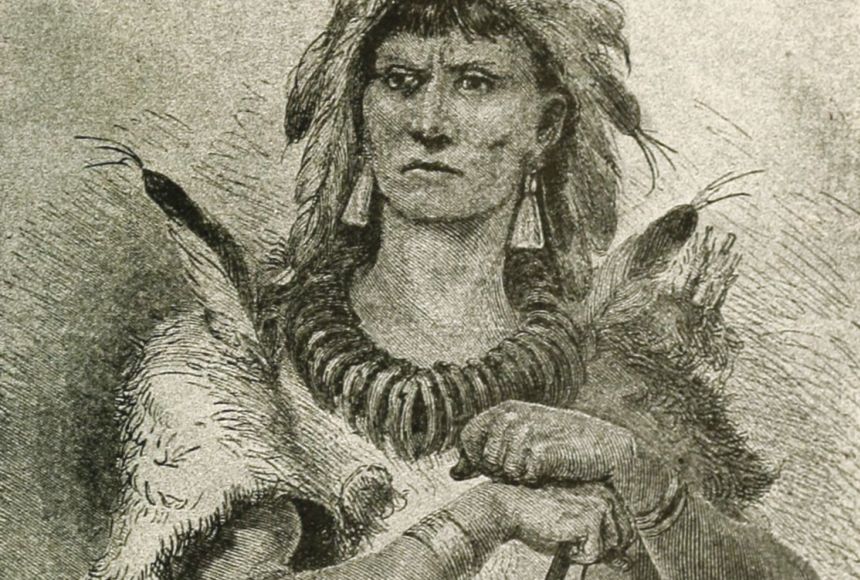The land along the Atlantic Coast was inhabited long before the first English settlers established their community at Jamestown in 1607. The Native Americans who lived on the land around Jamestown were members of the Powhatan group, one of many groups of the Algonquian (pronounced "al-GON-kiun") linguistic group. The Powhatan were a confederation of at least 30 Indigenous tribes. Farther west were the Monacan (pronounced "MON-uh-ken"), members of the Catawba (pronounced "kuh-TAW-buh") group who were part of the Siouan (pronounced "SOO-uhn") language group. The Native Americans living along the Appalachian Mountain Range were part of the powerful Iroquoian (pronounced "e-oh-KOY-uhn") group. Although the languages differed, these groups had developed similar cultures, as they adapted to the land on which they lived.
By the time of European contact, the Native Americans living in the mid-Atlantic region had settled in villages along waterways. They grew corn, beans, and squash; fished and hunted for deer, turkey, and other game; and gathered berries, nuts, wild plants, and roots from the surrounding forests. The Iroquoian groups lived with their extended family members in longhouses, which are large houses that use wooden poles as frames and are covered with bark or grass. The Algonquian groups also lived in longhouses or in wigwams (or wickiups), which are domed single-room dwellings.
The settlers at Jamestown lived among the Powhatan, who were among the more powerful groups of the region. At the time Jamestown was settled, there were roughly 30 Powhatan tribal groups or villages, with estimates of the total population ranging between 8,000 and 14,000. During these first years, the Powhatan traded with the colonists but also conducted small-scale raids against the fort. The Powhatan captured John Smith, an English colonist and soldier, and brought him back to their settlement, where—Smith alleged—the daughter of Wahunsenacawh, paramount chief of the Powhatan (referred to as Chief Powhatan by the settlers), Pocahontas, stepped in to save him from being killed. Historians have questioned the truth of this account, which was told by Smith. The oral history of the descendants of the Powhatan states children were not be allowed to be present during such ceremonies.
Subsequent events suggest the Powhatan and the English settlers at Jamestown had a rocky relationship. By 1609, the relationship between the two had crumbled with the Powhatan. This occurred during an ongoing drought, which harmed both communities. Suffering losses of their own, the Powhatan refused to trade with Jamestown. Furthermore, they laid siege to the fort, preventing the colonists from planting. Several hundred colonists died of starvation, malnutrition, or other starvation-related diseases in the winter of 1609–10, which came to be known as the “starving time.”
The Anglo-Powhatan War lasted until 1615. In 1613, Pocahontas was kidnapped by English Captain Samuel Argall and taken to Jamestown as a hostage, taking her away from her son. In the process, Argall murdered her husband, Kocoum. Pocahontas was not allowed to leave. Argall used her to bargain with Wahunsenacawh, hoping to improve relations between the Powhatan and the English.
In 1614, Chief Powhatan arranged for Pocahontas to be married to English planter John Rolfe. Whether this marriage was for love is unclear. Peace between English settlers and Native Americans was short-lived, however. Over the next several decades, conflicts between the Native Americans and the English erupted often, particularly as more waves of settlers came to claim land where the Native Americans lived. The Native Americans of the mid-Atlantic region—like those in other regions—could not defend themselves against the growing tide of Europeans and the diseases and firepower they brought with them. Like other Native Americans, they were pushed farther west and onto reservation land.
